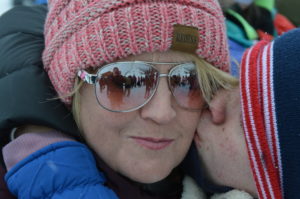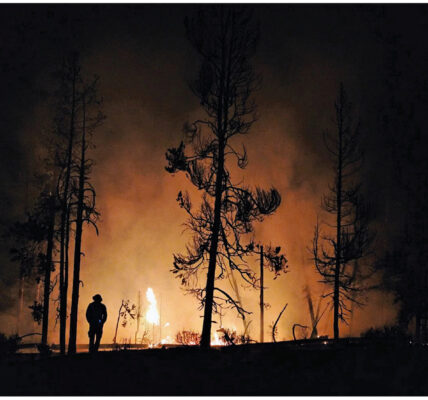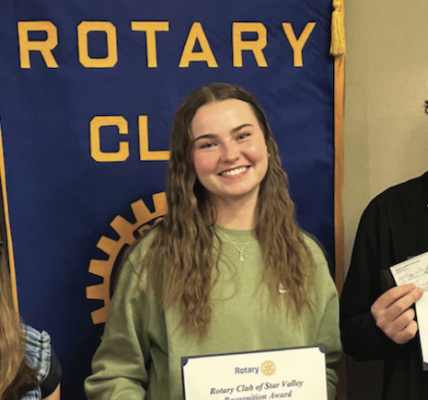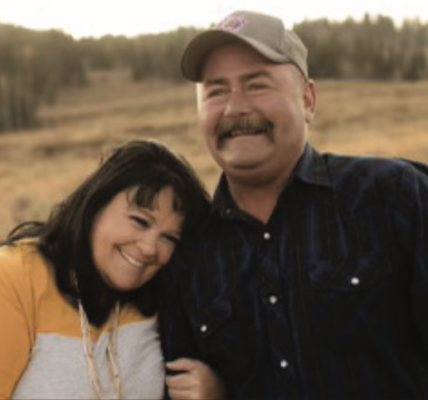Star Valley Special Olympics ran like a well-oiled machine Friday Feb 19 at Valley View Golf Course. Athletes, staff, family, peers all arrived, participants skied, snowshoed, and raced. Observers observed, cheered, got cold, athletes received awards, parents and family watched awards given out––much like you’d expect at a winter special olympics event.
But there’s a lot more to the story.
MaryBeth Basye, a 16-year veteran of special olympics past, credits much of the current quality of the program to Russ Gardner. She said, “Russ started special olympics in this valley. He started and built it from the ground up.”
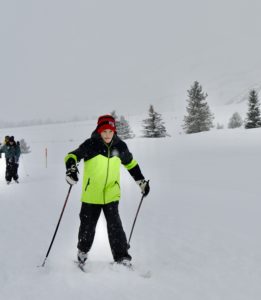
The early special olympics pioneers, Gardner, Basye, Woodford––and many others––focused on kids getting to compete and train like any other athlete, building that exercise into their lifestyle, letting them have the competition side, and really developing that skill set so they could see the growth.
Basye said, “These kids may learn differently. They may do things differently, but they can gain skill sets, just like anyone else.”
The current version of Special-O Friday featured a host of race starters, timers, peer athletes, an emcee/DJ, helpers, medal givers––all organized to support the games to flow smoothly, virtually to perfection.
Special Services Director, Nathan Wescott, was on hand through the morning to lend support to the event. SVHS principal, Jason Horsley and staunch supporter, Staci Horsley, were present to cheer on the athletes. Basye credits Wescott for wholehearted support and expressed appreciation for his backing. She also mentioned JC Inskeep and praised him for his continual encouragement and help with coaching saying, “He may not realize it, but he’s one of the greatest coaches I’ve ever seen.”
Basye also complimented her peers for their hard work and dedication: “I’m so thankful––all the administrators are stepping up, our school counselors are stepping up, all the teachers and case managers, Mike Allred, Lisa Campbell. Karen Goodson, Bryan Nichols, they’re all so passionate about it.”
On Friday the racers ran 5-6 heats. Then the crowd and athletes moved a few feet to the awards stand where the athletes received their medals. Athletes and staff moved quickly back to the ski/snowshoe course, and the races continued without a hitch.
Emcee, Josh Frazier, deserves special mention for his exceptional effort to make the day exciting and fun for everyone present. Frazier, at turns, gave announcements, did play-by-play commentary––which was amusing and delightful. He encouraged, cajoled, good-naturedly ribbed one participant about his Green Bay Packers’ hat, and he dramatically announced the winners at the podium. Hats off to Frazier for his efforts––just not a Green Bay Packers hat.
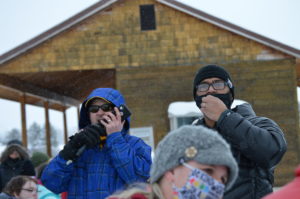
Key among the support crew for the event were student peers who functioned as teammates, competitors occasionally, and cheering supporters at all times. The organizing team asked for 10 SVHS students to come help with the event and got 20 volunteers.
Basye said, “For us, especially at the high school level, we want peers participating, and we choose those peers that have high expectations for the kids, and that they know they can do things and they challenge them, and they don’t let them stop when it gets hard.”
A crucial part of the idea of special olympics locally has been not just to allow students to participate in athletics, but it has the benefit of building teamwork with peers. Local special educators emphasize that peers are chosen carefully and are not allowed to dominate the game. They pass the ball. They let everyone dribble. Everyone carries the baton. Everyone plays.
Basey explained that peers come into her classroom and ask if they can spend time with her students for an hour. Some of those former peers are now in school to be special education teachers. Basey said, “That’s what it’s all about.”
“So we’re training the peers to believe in our kids––that they can dribble the ball or they can ski down a hill, and they can go fast. It’s just going to look different,” said, Basye. “We also want to meet kids where they’re at. So if we have somebody who’s not really competitive, then we want them to feel like you’re gaining this life skill. You don’t have to be the fastest. You don’t have to be the best.”
At Friday’s event, several boys turned in an incredible 11 and 12 second time for a fifty-yard race––in snowshoes. Lots of the athletes showed excellent form and very respectable times, which were kept for medal purposes, but no one seemed overly preoccupied with them.
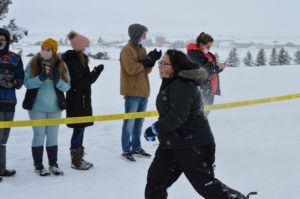
The entire event, which lasted around two-and-a-half hours, had more of the feeling of an extended outdoor family reunion with fun events than a highly intense athletic competition. On several occasions, athletes stopped, turned, and waited for a competitor to catch up so they could finish together. Students were celebrated for every race with loud cheering and medals.
Special olympics does not differ from other competitions in that competing is always about overcoming an internal struggle. All athletes work to overcome barriers and fears to develop skills they didn’t know they could, face competitors when they are unsure of the outcome, and show courage in the face of adversity.
In the end, our opponents are just there to hold a mirror up to ourselves and see who we are. Friday’s special olympics showed a lot of courageous, beautiful, supportive people, both on and off the course. A warning about special olympics, for those who get involved: It’ll get inside your heart and stay there.
